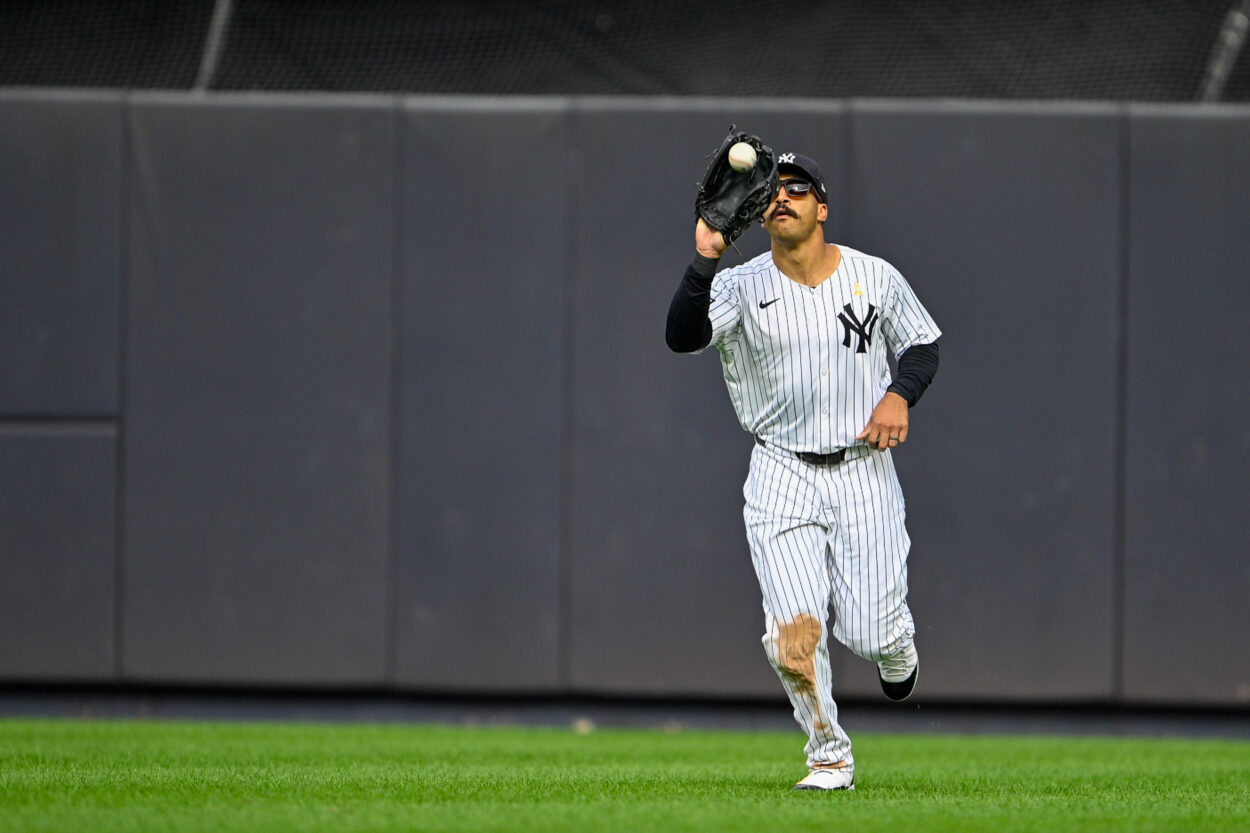
Twenty-two million dollars.
That is the kind of number that makes you spit out your morning coffee when you see it attached to the name Trent Grisham. It feels heavy. It feels like an overpay. When the Yankees extended the qualifying offer to their polarizing outfielder, they were likely playing a game of high-stakes poker, assuming he would decline it to chase a longer deal on the open market.
Grisham didn’t blink. He called the bluff. He took the cash.
Now the front office in the Bronx is staring at a one-year, $22 million commitment to a player who just posted some of the most confusing metrics in baseball. But before we grab the pitchforks and storm Hal Steinbrenner’s office, we need to look at the actual production. This might not be the disaster it feels like on Twitter.

Power production is expensive
General Manager Brian Cashman is betting on sustainability. He believes the swing changes Grisham made last year are not a fluke, and the numbers suggest he might be right. The 29-year-old didn’t just stumble into a career year; he powered his way through it.
- Home Runs: 34
- RBIs: 74
- wRC+: 129
- Walk Rate: 14.1%
You simply do not find 34 home runs and a 14% walk rate growing on trees. That 129 wRC+ means he was nearly 30% better than the league average hitter. Yes, he hit .235, but in the modern game, batting average is often a liar. Grisham provided elite thump.
Get him out of the Yankees’ leadoff spot
The real issue last season wasn’t Grisham’s swing; it was his deployment. Aaron Boone fell in love with batting him first, likely trying to leverage that walk rate. It didn’t work.
Grisham hit a miserable .202 from the leadoff spot.
While he did manage to hit 23 homers from that slot—largely because pitchers were terrified to put him on base ahead of Aaron Judge—he isn’t a table-setter. He is a damage dealer. The Yankees need to pivot. They need to find a true leadoff man like Brendan Donovan or maybe even dream big on Steven Kwan. Grisham belongs in the middle of the order where his power can clear the bases, not start the engine.
The defensive decline has a reason
Critics will point to his glove. They are right to do so. Grisham, once a Gold Glove caliber defender, looked lost at times last year. His efficiency plummeted.
However, context is everything. Grisham battled a nagging hamstring injury throughout the second half of the season. If you have ever tried to track down a fly ball in the gap with a bad hammy, you know it is impossible. A full offseason of rest should restore his mobility. If he returns to even average defensive metrics next season, the narrative changes completely.

It is just an expensive insurance policy
Let’s look at the worst-case scenario.
The Yankees swing and miss on Kyle Tucker. They fail to bring back Cody Bellinger. Without Grisham, they would be left staring at a depth chart that relies entirely on unproven kids like Jasson Dominguez or Spencer Jones to save the day. That is a terrifying thought for a team in a championship window.
This one-year deal protects the floor. It gives them a guaranteed 25+ home run bat who can abuse the short porch in right field. There is no long-term financial stress here. It is a one-year rental of a guy who just had his best offensive season ever. If he hits 30 homers again and plays decent defense, nobody will care about the price tag in August. And if he fails? The Yankees cut bait and move on.
It’s an expensive safety net, sure. But in New York, safety nets are worth paying for.
